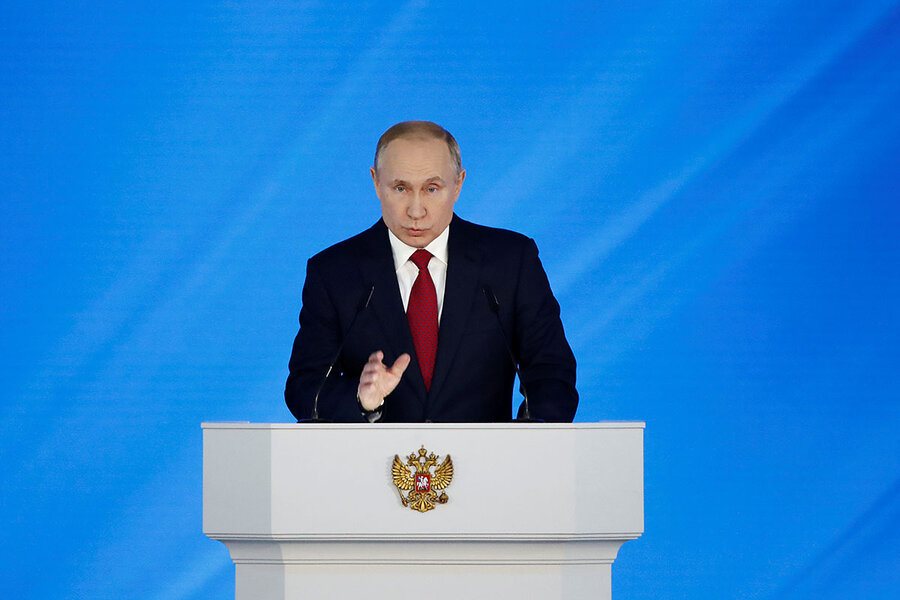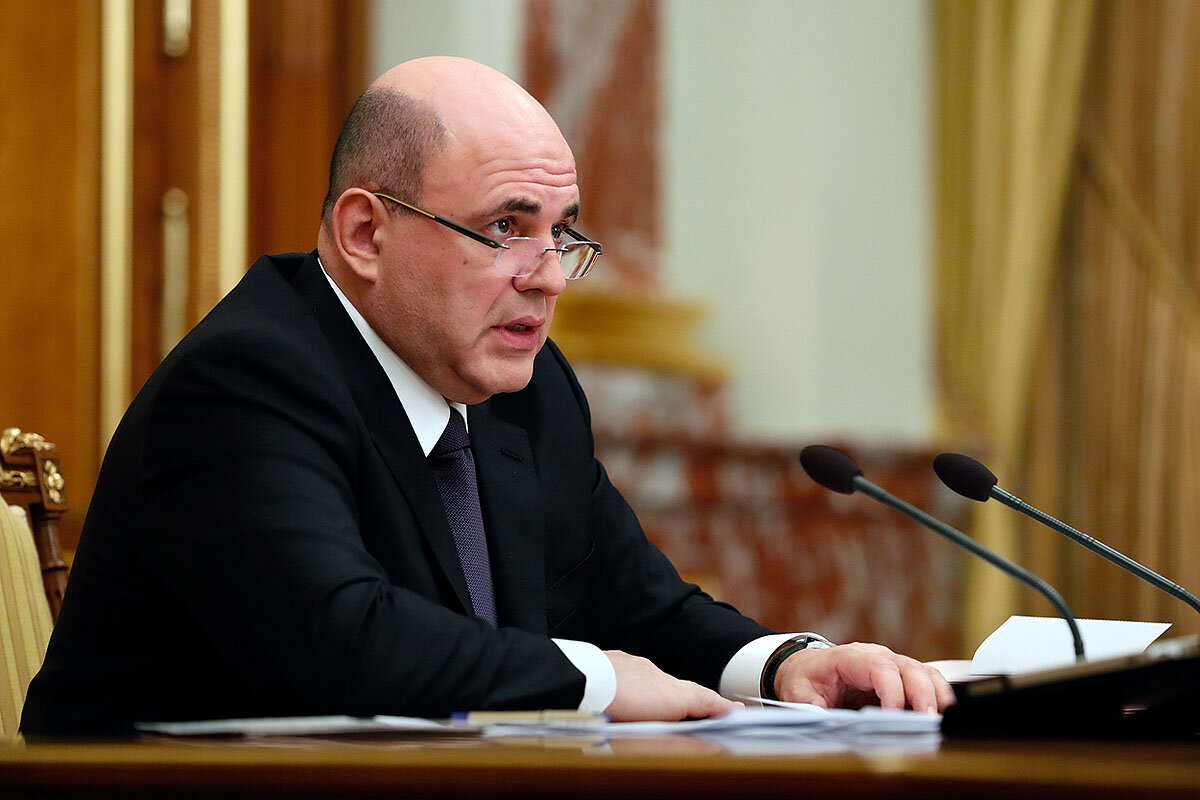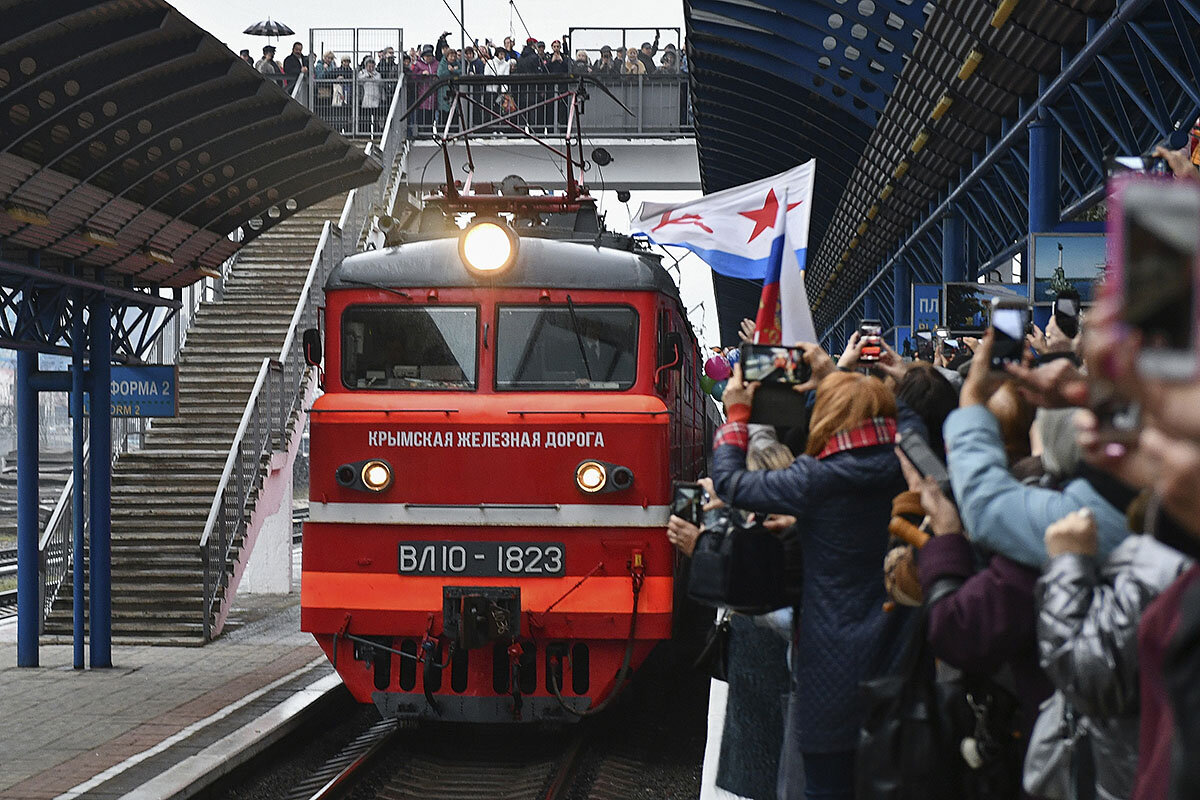Can long-austere Russia spend its way to a more dynamic economy?
Loading...
| Moscow
For the past six years, Russia has used a strict policy of austerity to shield its economy from the double-whammy of low oil prices and punitive Western sanctions. But that’s about to change, as the Kremlin adopts a tried-and-true capitalist formula.
Russia has announced that it is increasing state spending by up to 10% this year, and more in coming years, to tackle social problems like poverty and low birth rates. It also hopes that putting more money into the hands of consumers will jump-start Russia’s stagnating economy.
Though some may call this a reversion to Soviet-style methods, it’s actually similar to Franklin Roosevelt’s New Deal in the U.S. Along with a massive infrastructure-building program that got underway last year, the new plan amounts to nearly half a trillion dollars’ worth of economic stimulus that President Vladimir Putin hopes will propel Russia into the front ranks of global economic powers by the time he leaves office in 2024.
Why We Wrote This
Usually when one hears about Keynesian economics and stimulus spending, it’s in a Western policy debate. But Russia is adopting the approach in an attempt to put money in voters’ pockets and boost the economy.
Critics argue that these new spending plans, announced by Mr. Putin in his annual state-of-the-nation address last month, are really just a cynical ploy to boost popular living standards in advance of parliamentary elections due next year, which the pro-Kremlin United Russia party looks unlikely to win.
Mr. Putin will need a reliable legislative majority to pass the sweeping constitutional amendments he set forth in the same speech, which include what critics say are the means to prolong his reign. Therefore, the critics say, he has ditched the austerity policies of the past, appointed a whole new government, and is pressing forward with expansionary policies that may bring on at least a temporary burst of economic growth.
Others worry about the impact of new spending in a largely state-led economy in which government resists introducing structural reforms, such as privatization and strengthened property rights, and in which incomes have already greatly outstripped productivity growth. More money, especially in the hands of poorer Russians, is an undeniably good thing, say experts, but positive effects won’t last unless the economy starts producing more and better jobs for people.
“This can certainly work, at least to a certain extent,” says Ruben Enikolopov, rector of the New Economic School in Moscow. “Russian economic growth can rise from last year’s 1.3% to 2% or so, although it’s not really going to go much higher without major structural changes. It’s not particularly radical. It’s based on market forces” using old-fashioned Keynesian methods that are often described in the West as “priming the economic pump,” he says.
“Investing in people is always a good idea”
In the West, stimulus measures like this tend to be controversial because they usually involve some form of deficit-financing, either by borrowing money or raising taxes to pay for the new programs. Russia is in the enviable position of not having to worry about any of that, because its government is sitting on a mountain of cash accumulated during the past six years as the state prioritized saving money to ward-off external shocks from sanctions and falling oil prices.
As a result, Russia’s foreign currency reserves are near an all-time high of around $550 billion, and its national “rainy day” contingency fund is brimming over with $125 billion. Meanwhile, Russia’s national debt stands at around 15% of gross domestic product – a tiny fraction of the U.S. debt-to-GDP ratio, which was 105% last December.
“I never really understood why the previous government insisted on saving the budgetary surpluses they accumulated,” says Alexei Vedev, an expert with the Gaidar Institute in Moscow and former deputy minister of economic development. “The previous Cabinet was very good at saving, but really poor at investing.”
The new government appointed by Mr. Putin, headed by Prime Minister Mikhail Mishustin, is composed of accomplished technocrats. Mr. Putin clearly hopes they will find efficient ways of pumping money into economically distressed sectors of the population to raise living standards and improve the government’s falling public approval ratings.
“Investing in people is always a good idea,” says Mr. Vedev. “But it really matters how it is done. We have yet to see a real strategy. And in the absence of structural reforms, the impact will be limited.”
Although Mr. Putin’s personal approval rating remains high, at 68%, the new government of Mr. Mishustin has not enjoyed even the briefest of honeymoons, clocking in at only 48% public approval in its first month against 37% disapproval, according to the Levada Center, Russia’s only independent polling agency. Years of austerity, including deeply unpopular pension reforms, have taken a deep toll on public trust, experts say.
But there is no doubt that the idea of more social spending is popular. “Everything like this will enjoy massive public support,” says Denis Volkov, a researcher at the Levada Center. “Putin’s words about fighting poverty, providing more financial support for mothers and children, hit the nail on the head for most people. They’ve been waiting to hear this for a long time.”
Deputy Prime Minister Andrei Belousov, a former Kremlin official who has been put in charge of the new program, announced that an extra $5 billion will be spent this year, primarily to help families. This is a reaction to dire demographic projections, which show that there will be at least 7 million fewer mothers in Russia over the next decade as a result of the population slump that took place in the 1990s.
The poverty index has risen in recent years, with nearly 21 million Russians now living below the official subsistence level. It’s hoped that more cash in the hands of Russian families will stimulate the birth rate, and lead to more domestic consumer spending to buoy Russian manufacturing.
“About half of Russians live on salaries of less than $500 per month. That means they can only afford the most basic staples,” says Mikhail Chernysh, an expert at the official Institute of Sociology in Moscow. “Obviously better nutrition and living conditions is a good thing. But what young people want are better opportunities, and these are not forthcoming. That is why so many of them want to emigrate. So it’s all very well to invest in ‘human capital’, but that needs to go hand-in-hand with real economic growth. And that is what is still missing.”
The limits of big projects
One cautionary tale involves the vast $410 billion infrastructure program launched by Mr. Putin as he entered his last term of office. While it has certainly scored some high-profile successes, such as the $4 billion road-and-rail bridge – Europe’s longest – that now links the annexed Crimean Peninsula with the Russian mainland, many of the ambitious projects set forth by Mr. Putin are reportedly languishing.
The problem is not a lack of money – Russia’s government has plenty of that – but a deficit of state expertise, too few companies with the experience of carrying out such projects, and a pervasive fear of corruption, analysts say.
“These infrastructure projects are enormous,” says Mr. Vedev. “They look great on paper, but implementing them is something else entirely. Some figures have shown that up to half of money in these projects gets stolen. So, the officials in charge are extremely cautious about disbursing funds. After all, they could go to jail.”
The new welfare spending does not present the same problem, but the scheme remains badly worked out, says Yevgeny Gontmakher, an economic sociologist. He says expenditures need to be effectively targeted, otherwise funds intended for poor families with children will go equally to wealthier families who don’t need it.
“In the final analysis, what we need most urgently are reforms, to improve the investment climate, property rights, and reduce state economic control,” he says. “That is the only way to stimulate creation of better jobs, higher productivity, and more livable incomes.”








